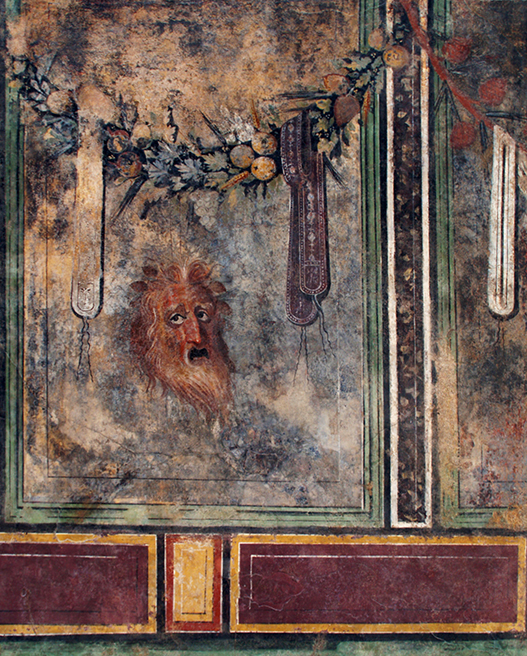
This chapter examines the thesis that wall-painting within the Roman house was symptomatic of the pursuit of private luxury and personal status. The theories of several contemporary social historians are underpinned by this thesis, which differs significantly from views held by late nineteenth and early twentieth century historians who believed that the Roman house and its contents created a sanctuary-like space designed to safeguard family values and aspirations (Albert Grenier, Franz Cumont, Karl Schefold et al).
Since the 1980s numerous publications have cited domestically located wall-paintings from Pompeii and Herculaneum as circumstantial evidence for luxury and the display of personal status within the domus (house and household). These publications, ipso facto, define wall-painting as a luxury item because it was costly to produce and thought to depict imagery that signified the desire to own a private ‘palace’. These texts mirror a trope prevalent in ancient Roman fictional literature exemplified by the Satyricon. Attributed to Petronius, c. 27-66 AD, this early form of novel and a modern counterpart, The Last Days of Pompeii, written in 1834 by the Victorian Lord and politician Bulwer-Lytton (1803–1873), were largely responsible for recasting Pompeii as an infamous Roman pleasure resort, to which Lytton added a fictitious Christian community struggling to overcome Trimalchioesque hedonism and 'pagan cruelty'.
In Lytton’s melodramatic novel pagan cruelty is synonymous with luxury and is epitomised by Arbaces, the ‘evil’ priest of Isis, who is eventually consumed by the redeeming fires of Vesuvius, along with his ill-gotten gains acquired through superstitious deceit. Needless to say the good Christians, exemplified by Ione and Glaucus, escape divine retribution. The 2013 exhibition The Last Days of Pompeii: Decadence, Apocalypse, Resurrection at the Paul Getty Villa Museum, Malibu, California (modelled on the Villa of the Papyri, Herculaneum) explored this dynamic conflation of geological event and melodramatic novel.
Somewhat ironically, a similar Satyriconesque portrayal of Roman society re-emerged during the financial boom of the early 1980s when social historians used the unearthed contents of the Roman house as an index for defining social status. Since the wall-paintings were amongst the most visible socio-cultural remains they became signifiers of luxury and consequently divested of inherent meaning. The problem with interpreting art as symptomatic evidence of luxury is that it requires more than a superficial reading of both art and its social context. Unfortunately, this was not satisfactorily carried out because sociological approaches to artefacts are all too often predetermined by literary sources, to which the artefacts are then made to conform. Katherine Dunbabin provides a telling example of this in her study on ‘Convivial spaces: dining and entertainment in the Roman villa’ (Dunbabin 1996: JRS V.9: 66-80). After first making the reader aware of the more licentious accounts of banquets she then points out, “I think we have to conclude that, even in rich villas, really lavish dining was not the norm in the late Republic and early empire, despite the literary stories." In other words the visual evidence in the form of modest sized dining areas is at odds with the literary descriptions of lavish banqueting.

|